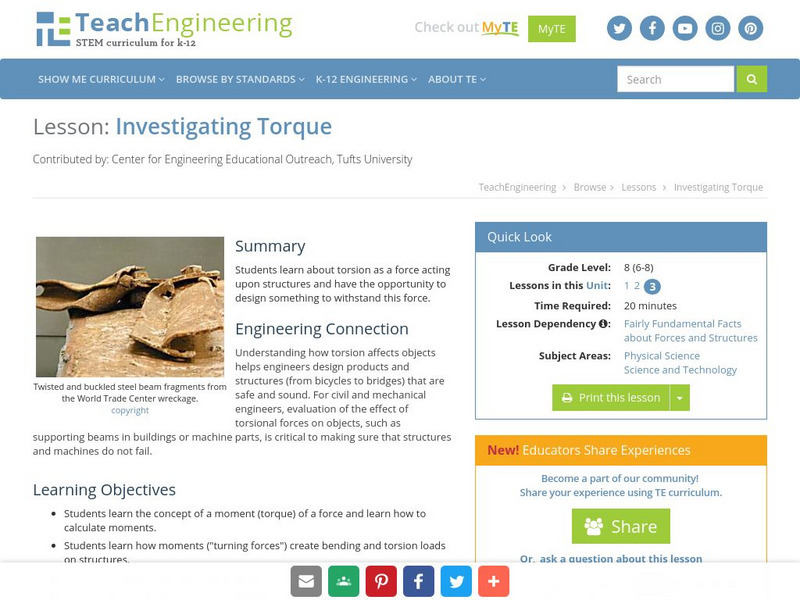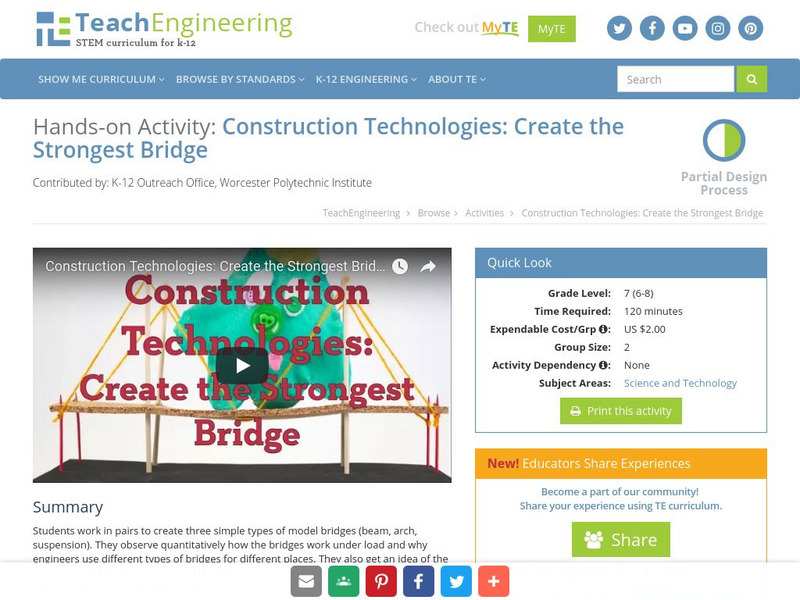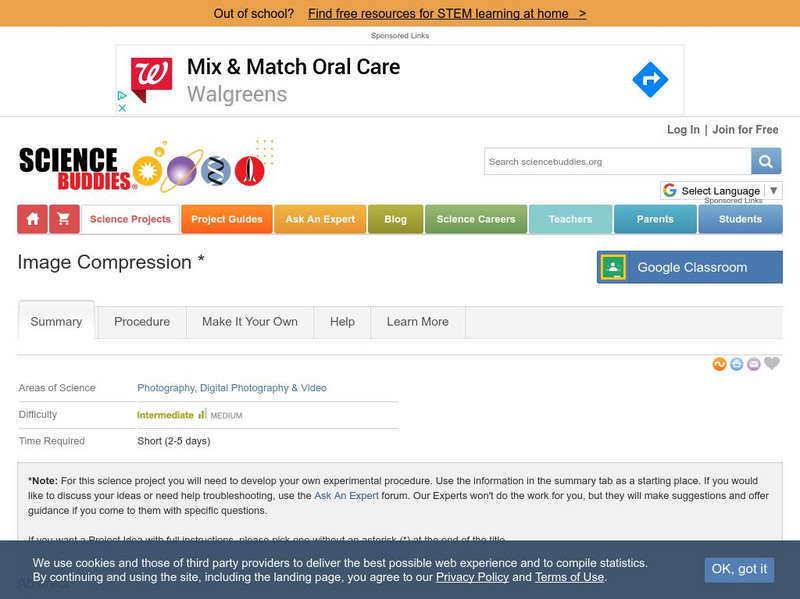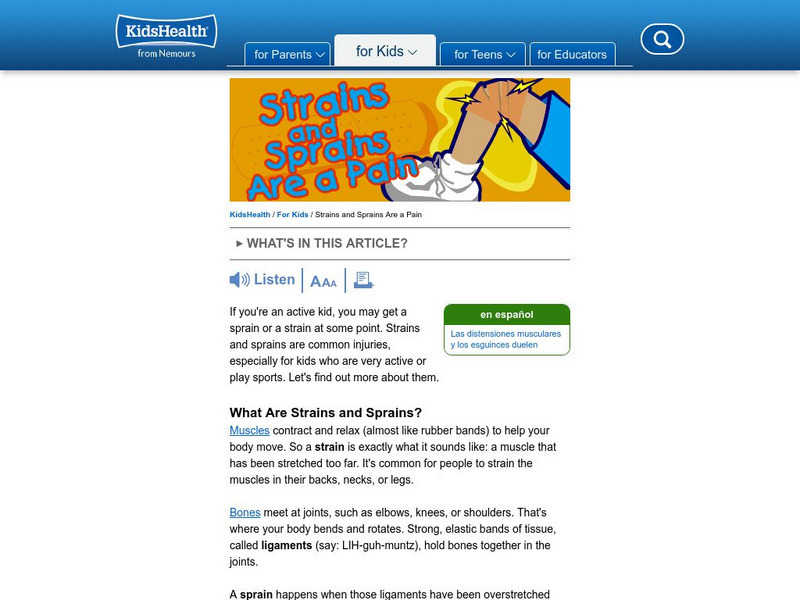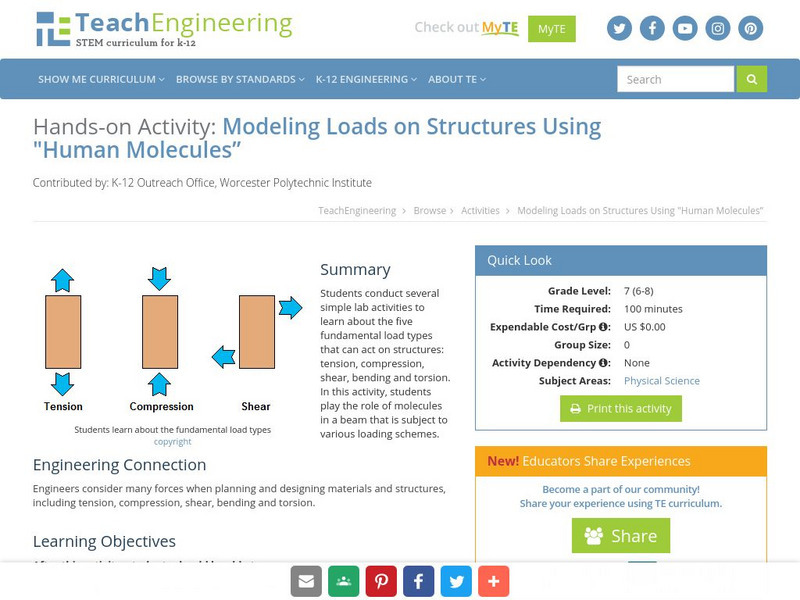TeachEngineering
Teach Engineering: Feel the Stress
Working individually or in groups, students explore the concept of stress (compression) through physical experience and math. They discover why it hurts more to poke themselves with mechanical pencil lead than with an eraser. Then they...
TeachEngineering
Teach Engineering: Investigating Torque
This lesson focuses on torsion as a force acting upon structures. Students will have the opportunity to design something to withstand this force.
Texas Education Agency
Texas Gateway: Transformations of Exponential and Logarithmic Functions
Given an exponential or logarithmic function, the student will describe the effects of parameter changes.
TeachEngineering
Teach Engineering: Fairly Fundamental Facts About Forces & Structures
This lesson will introduce students to the five fundamental loads: compression, tension, shear, bending, and torsion.
Texas Education Agency
Texas Gateway: Plate Boundaries
Find out about what happens at plate boundaries.
TeachEngineering
Teach Engineering: Construction Technologies: Construct the Strongest Bridge
In this activity, students will work in pairs to create three simple types of bridges. They will observe quantitatively how the bridges work under load and why engineers use different types of bridges for different places. They also will...
NASA
Nasa: Gas Properties Definitions
Use this site to learn about basic gas properties including motion, viscosity, and compressibility. Includes links to activities for all ages.
Georgia State University
Georgia State University: Hyper Physics: Speed of Sound
Physics tutorial on measuring the speed of sound in dry air. An interactive form allows the student to practice solving problems involving the temperature dependence of the speed of sound.
Science Buddies
Science Buddies: Image Compression
Compare the strengths and weaknesses of different digital image formats. How does the amount of compression affect a JPEG image? What happens when you save a JPEG image multiple times?
Science Education Resource Center at Carleton College
Serc: Experimenting With Sound/compression Waves Through Vibration
Through inquiry, students will use various objects/materials attached to strings to investigate how vibration causes sounds waves.
PBS
Pbs Teachers: Building Columns
Explore different types of supports and the forces that act upon them. Investigate the best design of a column, including the role that size and dimensions play on its load capacity.
Other
Avatar Consultants, Inc: Definitions of Sound
Sound is defined and characterized as a wave consisting of oscillations in pressure of a medium. Includes graphics and links to further information.
Colorado State University
Csu: Model of Basic Otto Cycle
This site from the Colorado State University discusses the Otto cycle of a car engine. Includes a highly mathematical treatment of the efficiency of such engines. Includes a link to a java applet investigating the efficiency of such...
Concord Consortium
Concord Consortium: Molecular Workbench: States of Matter
Change variables in this simulation to see how compression affects different states of matter.
CK-12 Foundation
Ck 12: Earth Science: Types of Fossilization
[Free Registration/Login may be required to access all resource tools.] Five methods that create fossils.
Curated OER
Kids Health: Strains and Sprains Are a Pain
In addition to describing how one might get a strain or sprain, this article offers well-organized, clear advice for those caring for their sprained or strained muscles. Links to related information included.
TeachEngineering
Teach Engineering: Leaning Tower of Pasta
Using spaghetti and marshmallows, students experiment with different structures to determine which ones are able to handle the greatest amount of load. Their experiments help them to further understand the effects that compression and...
TeachEngineering
Teach Engineering: Forces on the Human Molecule
Students will conduct several simple lab activities to learn about the five fundamental load types that can act on structures: tension, compression, shear, bending, and torsion. In this activity, students will play the role of molecules...
TeachEngineering
Teach Engineering: The Squeeze Is On
Students will learn about the force of compression and how it acts on structural components through a hands-on group project. Using everyday products such as paper, toothpicks, and tape they will construct a structure that will support...
TeachEngineering
Teach Engineering: Testing Fundamental Loads
Students will conduct several simple lab activities to learn about the five fundamental load types that can act on structures: tension, compression, shear, bending, and torsion. In this activity, students break foam insulation blocks by...
TeachEngineering
Teach Engineering: Bridging the Gaps
Students are presented with a brief history of bridges as they learn about the three main bridge types: beam, arch and suspension. They are introduced to two natural forces - tension and compression - common to all bridges and...
TeachEngineering
Teach Engineering: Rock Solid
Rocks cover the earth's surface, including what is below or near human-made structures. With rocks everywhere, breaking rocks can be hazardous and potentially disastrous to people. Students are introduced to three types of material...
CK-12 Foundation
Ck 12: Plix: Stress Types: Geological Stresses
[Free Registration/Login Required] This site includes the chance to label diagrams and answer a short quiz about geological stresses.
TeachEngineering
Teach Engineering: Glue Stick Activity
In this activity students will use hot glue gun sticks to show tension, compression and torsion.



